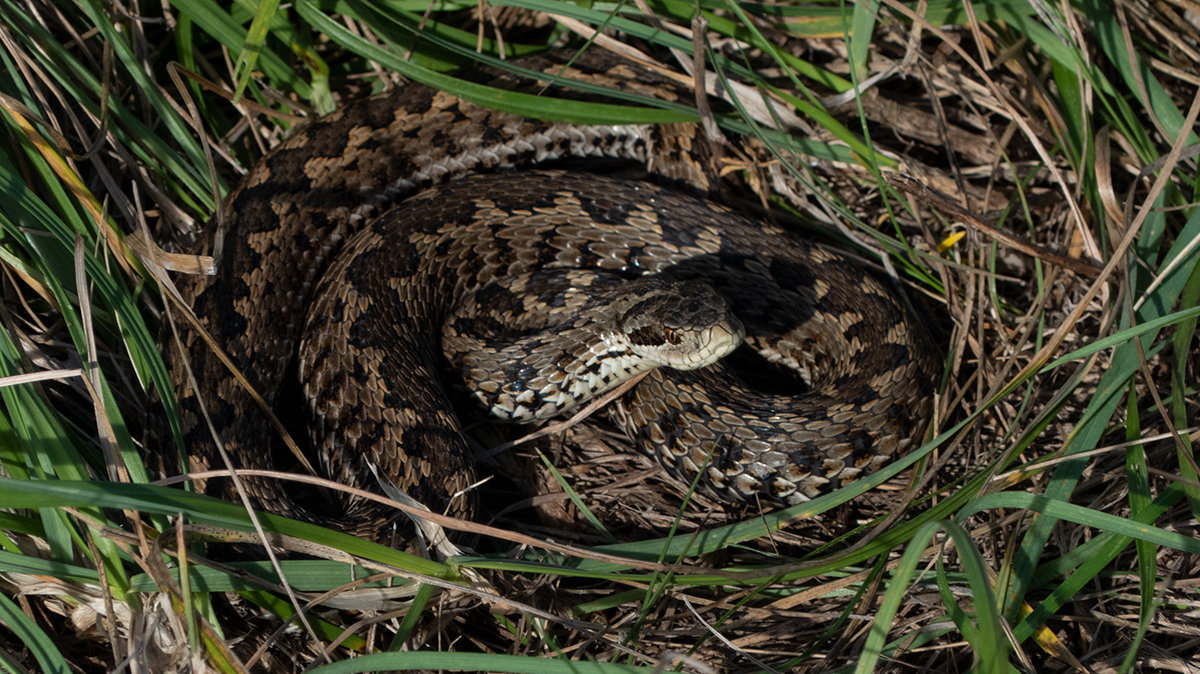
The Meadow Viper is a fascinating creature that inhabits meadows and grasslands across the world. Known for its vibrant colors, unique patterns, and venomous bite, the Meadow Viper never fails to capture the attention of nature enthusiasts and researchers alike. In this article, we will delve into the world of this remarkable snake and uncover 10 astounding facts that will leave you in awe. From its stealthy hunting techniques to its specialized adaptations, the Meadow Viper has truly carved out a niche for itself in the animal kingdom. So, sit back, relax, and prepare to be amazed by these incredible revelations about the Meadow Viper.
Key Takeaways:
- Meadow Vipers are small but mighty, with venomous bites and a diverse diet. They play a crucial role in maintaining the ecosystem by controlling small mammal populations.
- These striking snakes hibernate in winter, give birth to live young, and are protected by conservation efforts due to their declining population.
The Meadow Viper is one of the most venomous snakes in the world.
The Meadow Viper, also known as Vipera ursinii, is a highly venomous snake species found in various parts of Europe and Asia. Its venom is powerful and can cause serious harm or even death to its prey.
It has a striking appearance.
The Meadow Viper has a distinct pattern on its scales, consisting of a combination of dark brown or black zigzag lines on a light brown or yellow background. This unique pattern helps it camouflage within its natural habitat.
They are relatively small in size.
Compared to other snake species, the Meadow Viper is relatively small, typically measuring between 20 to 30 centimeters in length. Their small size allows them to move swiftly through the grassy meadows they inhabit.
Meadow Vipers are ambush predators.
These vipers are known for their ambush hunting technique. They patiently wait in a concealed spot, such as tall grass or under rocks, and strike at unsuspecting prey that ventures too close.
They have a diverse diet.
Meadow Vipers have a varied diet, feeding on a range of small vertebrates, including rodents, lizards, frogs, and even other snakes. Their venom aids in quickly immobilizing their prey.
This species hibernates during winter.
Meadow Vipers hibernate during the colder months to conserve energy. They seek out crevices and burrows underground, where they can safely wait until the weather becomes more suitable for hunting and activity.
Meadow Vipers play a role in maintaining the ecosystem.
These vipers are considered to be important predators within their ecosystem. They help control populations of small mammals and other vertebrates, contributing to the balance of the food chain.
Females give birth to live young.
Unlike some snake species, Meadow Vipers give birth to live young instead of laying eggs. The female retains the eggs internally and gives birth to fully-formed offspring.
They are protected by conservation efforts.
The Meadow Viper is a protected species in many countries due to its declining population. Conservation efforts focus on preserving its habitat and raising awareness about the importance of these snakes in the ecosystem.
There are different subspecies of Meadow Viper.
There are several recognized subspecies of Meadow Viper, each adapted to different regions and environments. These subspecies have slight variations in appearance and behavior.
Overall, the 10 astounding facts about the Meadow Viper showcase its unique characteristics and importance in the natural world. With its venomous nature, striking appearance, and role in the ecosystem, the Meadow Viper continues to captivate the interest of researchers and nature enthusiasts alike.
Conclusion
In conclusion, the Meadow Viper is a fascinating creature with a venomous bite and unique adaptations that allow it to thrive in various environments. From its striking appearance to its intriguing behaviors, this snake captivates the attention of both wildlife enthusiasts and researchers alike. Whether it’s its ability to camouflage in meadows or its impressive hunting strategies, the Meadow Viper is truly an astounding animal.
FAQs
Q: Are Meadow Vipers dangerous to humans?
A: Yes, Meadow Vipers are venomous and their bite can be dangerous to humans. It is important to exercise caution and avoid any interaction with these snakes in the wild.
Q: What do Meadow Vipers eat?
A: Meadow Vipers are carnivorous and primarily feed on small mammals, birds, and reptiles. They use their venom to immobilize their prey before consuming it.
Q: How do Meadow Vipers defend themselves?
A: Meadow Vipers have various defense mechanisms. They can camouflage themselves in their surroundings, making it difficult for predators to spot them. Additionally, their venomous bite is a potent deterrent to potential threats.
Q: Where can Meadow Vipers be found?
A: Meadow Vipers are native to certain regions of North America, including meadows, fields, and grasslands. They prefer habitats with abundant vegetation and suitable prey.
Q: How long do Meadow Vipers live?
A: Meadow Vipers have an average lifespan of around 10-15 years in the wild. However, with proper care and captive conditions, they can live up to 20 years or more.
Was this page helpful?
Our commitment to delivering trustworthy and engaging content is at the heart of what we do. Each fact on our site is contributed by real users like you, bringing a wealth of diverse insights and information. To ensure the highest standards of accuracy and reliability, our dedicated editors meticulously review each submission. This process guarantees that the facts we share are not only fascinating but also credible. Trust in our commitment to quality and authenticity as you explore and learn with us.
